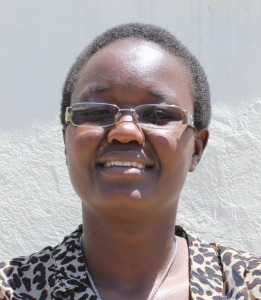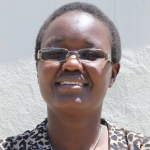Enyapora Primary School was established in 1992 to help families who couldn't afford the high school fees in the area. It started with just preschool classes but has grown massively to currently have over 700 students from many different grades.
There are 12 classrooms and a small field where students can play. They also have a kitchen where lunch is prepared for the older students since they are studying to the entire high school.
The school needed water and was very optimistic when they got connected Kenya Water Service's piped water system. A tap is located outside the classroom block, but the administration has been greatly disappointed by a real lack of service coupled with high water bills.
However, the pipe carrying water to the school can go dry for months on end.
This forces students to leave class and go out into the community to find water. They walk to a spring that's very far away, about 1.5 kilometers each way. Students waste a lot of time and energy on this trek for water, and they arrive back at class worn out and unable to concentrate.
Many households live nearby the spring and are found there when the students arrive. The students must then wait in line with their containers until it's their turn to get water.
"Lack of water in the school has led to poor sanitation and hygiene because water being everything, the classrooms and latrines cannot be clean without water accessibility in the school. We have piped water in the school but the water is not consistent because it sometimes dries up for months, and the bill is always so high that sometimes the water company disconnects it because the school is not able to pay," said Headteacher Sika.
"You will really help the school because the pupils have been affected so much for a long period of time."
What we can do:
Training
Training on good hygiene habits will be held for two days. The facilitator will use PHAST (participatory hygiene and sanitation transformation), ABCD (asset-based community development), CTC (child to child), lectures, group discussions, and handouts to teach health topics and ways to promote good practices within the school. The CTC method will prepare students to lead other students into healthy habits, as well as kickstart a CTC club for the school.
Handwashing Stations
This CTC club will oversee the new facilities, such as handwashing stations, and make sure they are kept clean and in working condition. The two handwashing stations will be delivered to the school, and the club will fill them with water on a daily basis and make sure there is always a cleaning agent such as soap or ash.
VIP Latrines
"The school is in urgent need of the latrines because the population is overwhelming and this has forced the pupils to queue even in the toilet in order to ease themselves," said Naomi Omar, who works in the school kitchen.
Two triple-door latrines will be constructed with local materials that the school will help gather. Three doors will serve the girls while the other three serve the boys. And with a new source of water on school grounds, students and staff should have enough to keep these new latrines clean.
Rainwater Catchment Tank
A 50,000-liter rainwater catchment tank will help alleviate the water crisis at this school. The school will also help gather the needed materials such as sand, rocks, and water for mixing cement. Once finished, this tank can begin catching rainfall that will be used by the school’s students and staff.
The school will no longer be faced with a water bill of up to 6,000 Kenyan Shillings per month for the piped water, which is not sustainable for them. The school will enjoy having their own water source on school grounds that doesn't depend on other sources. We and the school strongly believe that with this assistance, standards will significantly improve. These higher standards will translate to better academic performance!

 Rainwater Catchment
Rainwater Catchment
 Rehabilitation Project
Rehabilitation Project


































